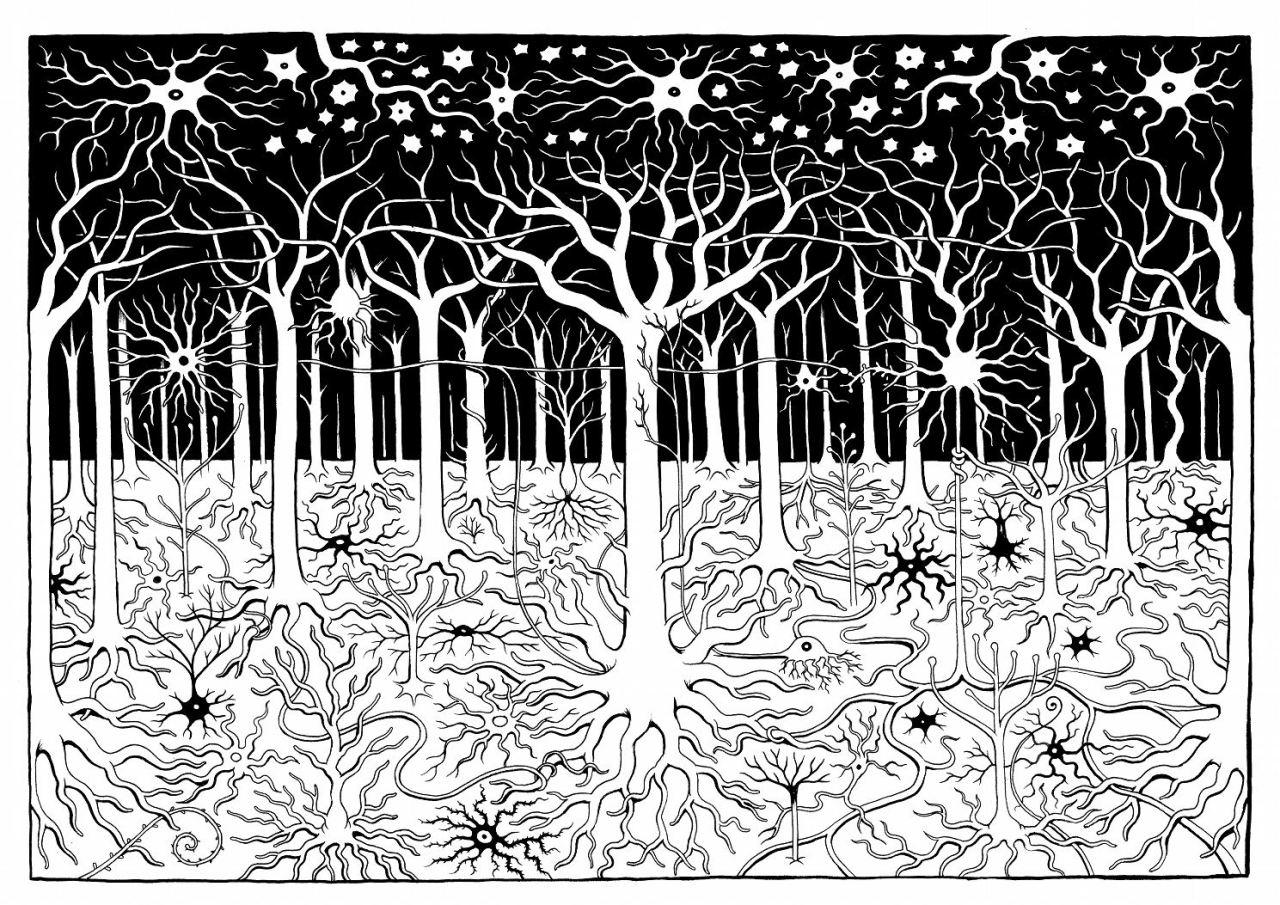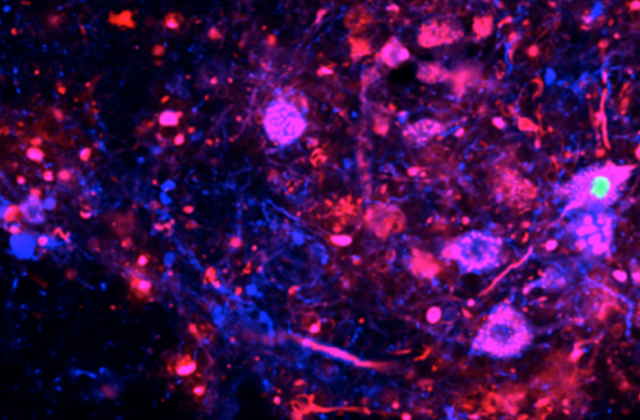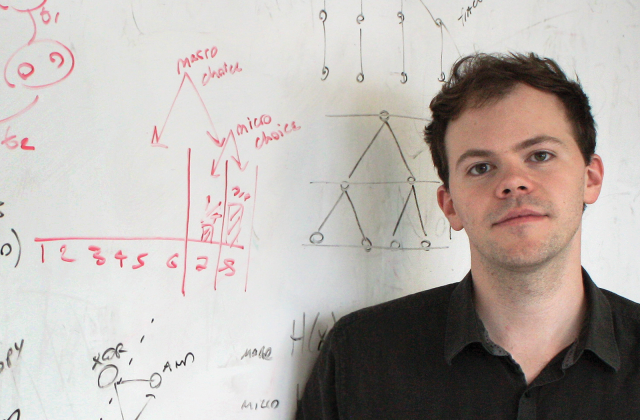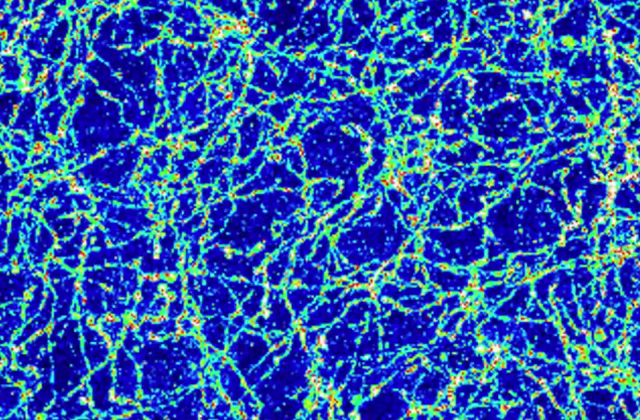Can visual metaphors deepen public understanding of the brain?

The Senses, a new graphic novel by Columbia postdoctoral researcher Matteo Farinella, follows Diane, a virtual-reality researcher, as she travels inside the brain. Amidst forests of neurons, she encounters characters, including notable scientists, who help her understand how the senses work. On her journey, she examines taste buds up close, learns how optical illusions trick the cells in our eyes, and why mountains at a distance always appear blue.
The Senses is Farinella’s second graphic novel. His first, Neurocomic, written with a postdoc named Hana Ros, similarly brings the principles of neuroscience to life for nonscientists. In both, his early exposure to the Bonelli comics (the Italian equivalent of Marvel) growing up in Bologna and his later encounters with comics by R. Crumb and Daniel Clowes combine with his undergraduate work in biology and his Ph.D. research building computational models of brain cells.
Farinella’s scholarship also focuses on how abstract ideas can be explained and expressed through metaphor. As one of Columbia’s Presidential Scholars in Society and Neuroscience, Farinella is developing experiments to determine whether comics can help readers remember complex ideas. For his first experiment, he created a comic based on the work of Columbia researcher Kimberly Noble, who explores the effects of poverty on children’s brains. Ultimately, Farinella wants comics to be recognized as a legitimate form of science communication, introducing readers to essential concepts and sparking their curiosity to explore further. Learn more.
Make Your Commitment Today



